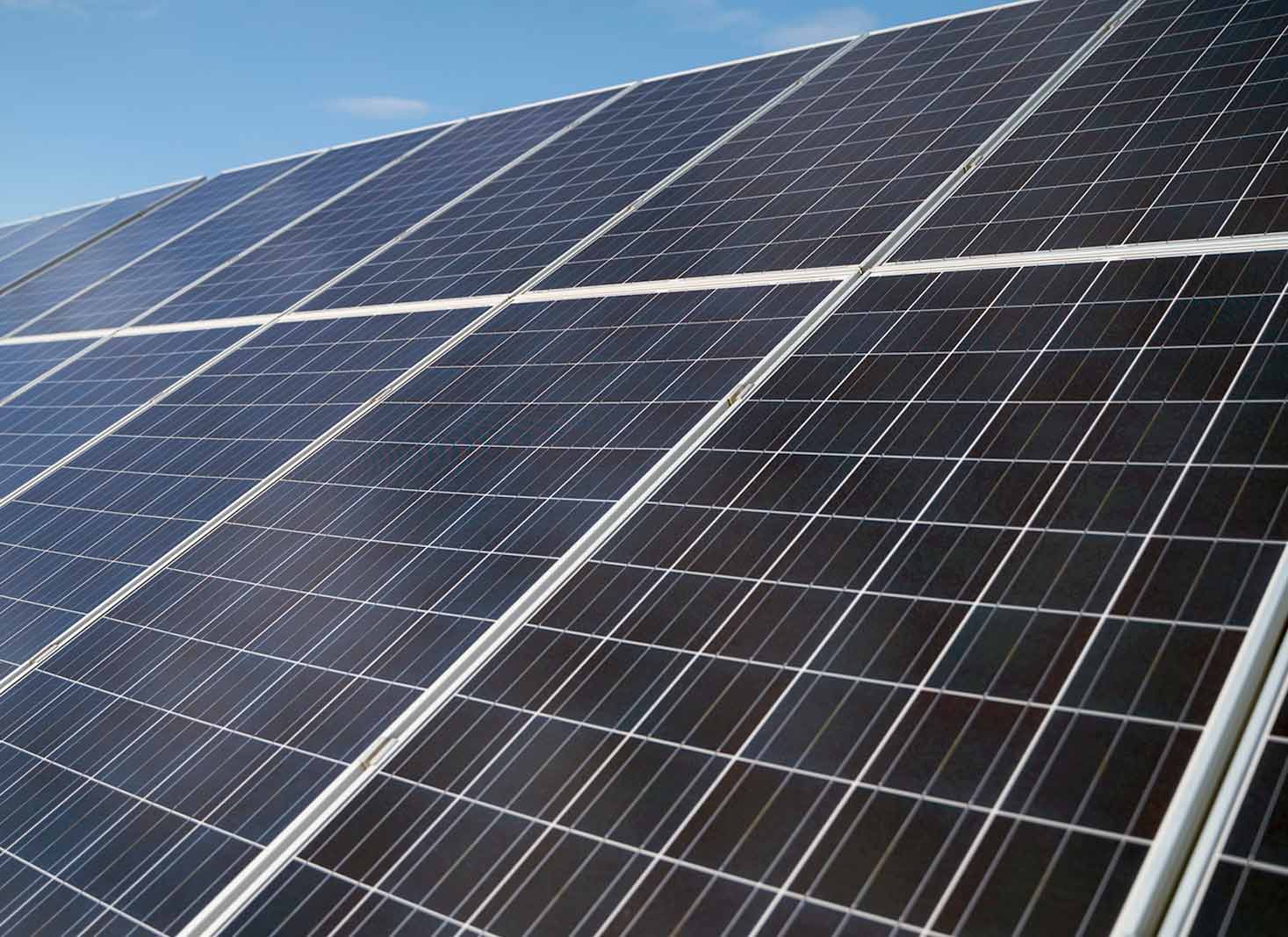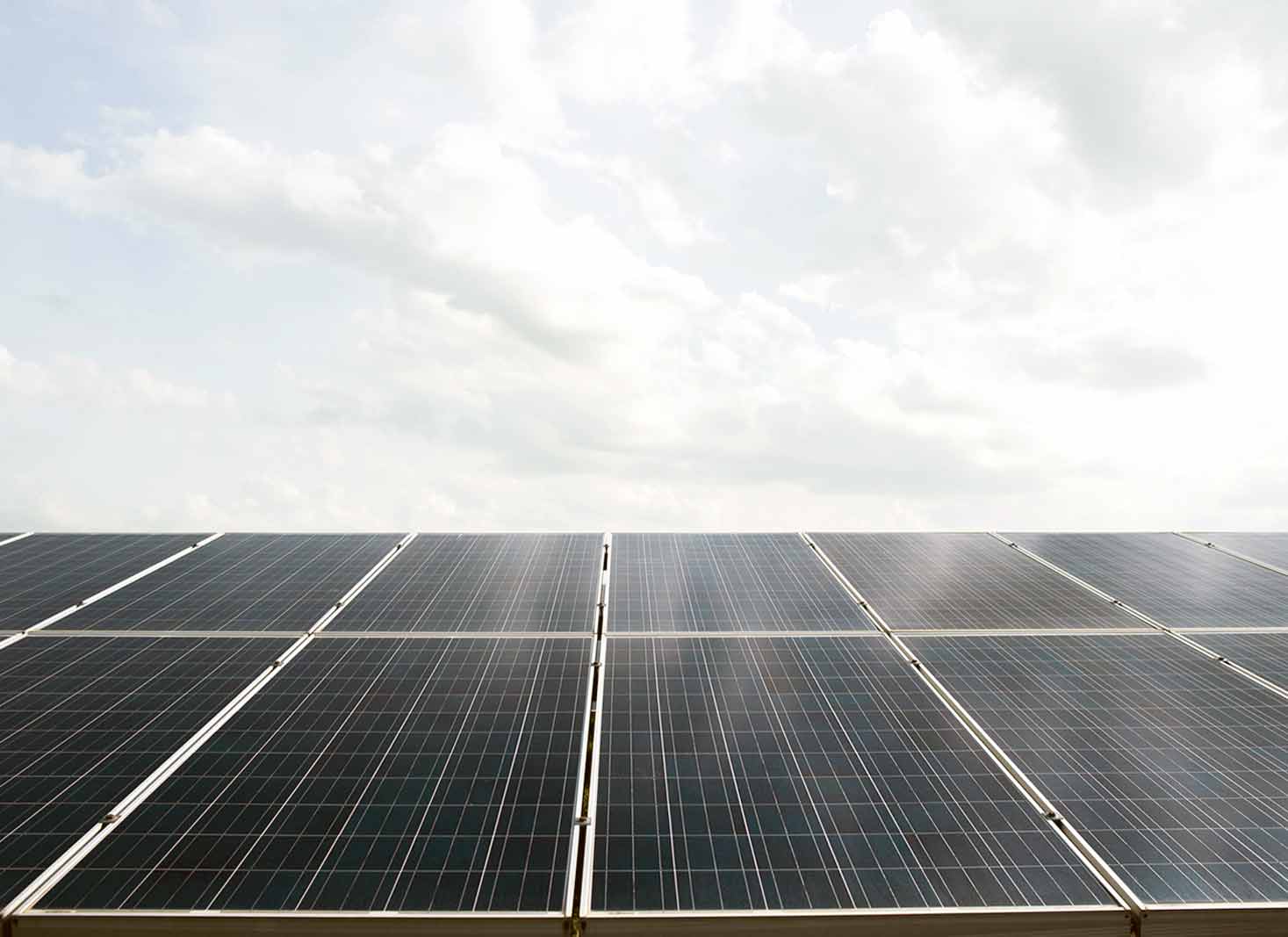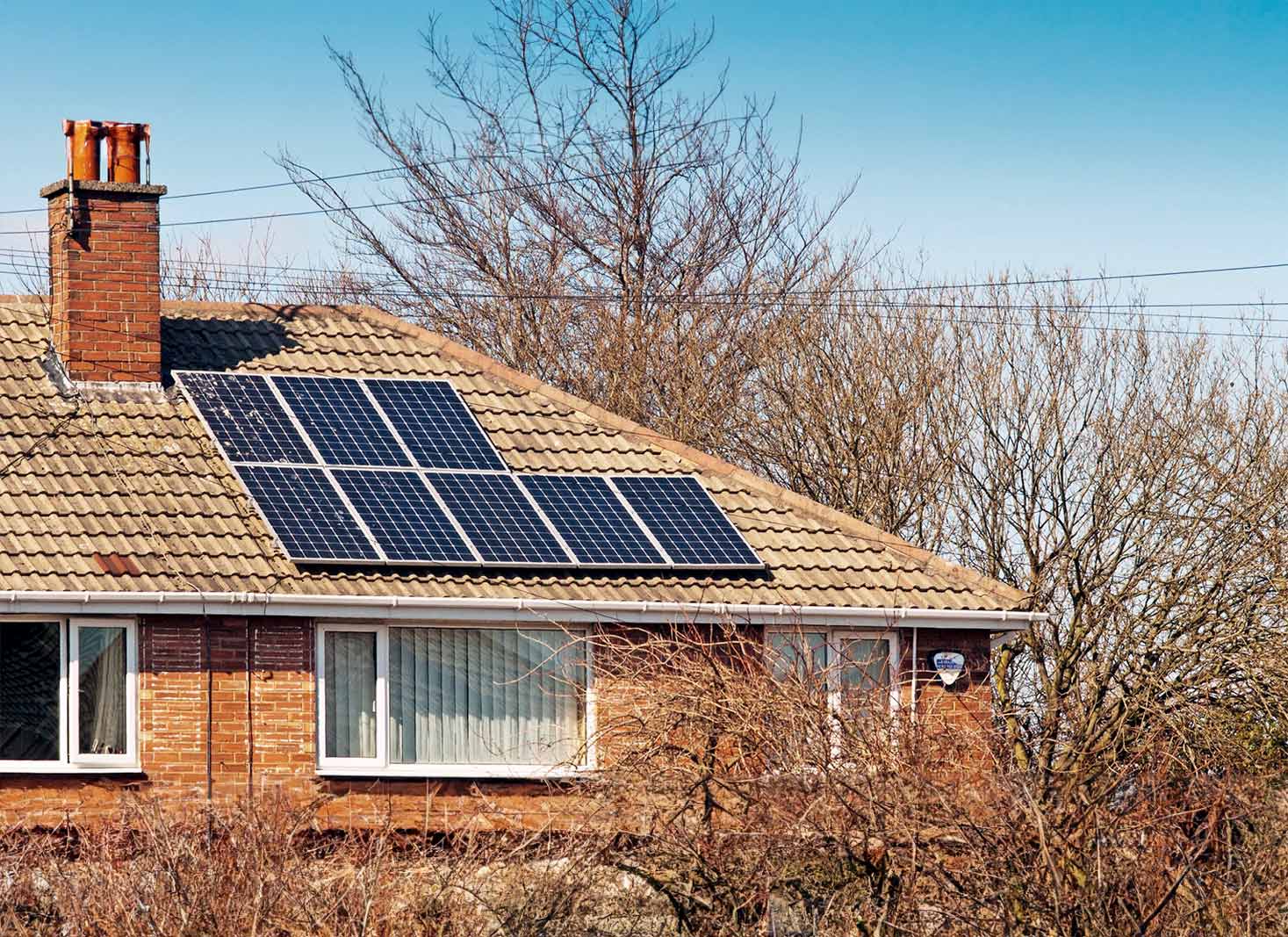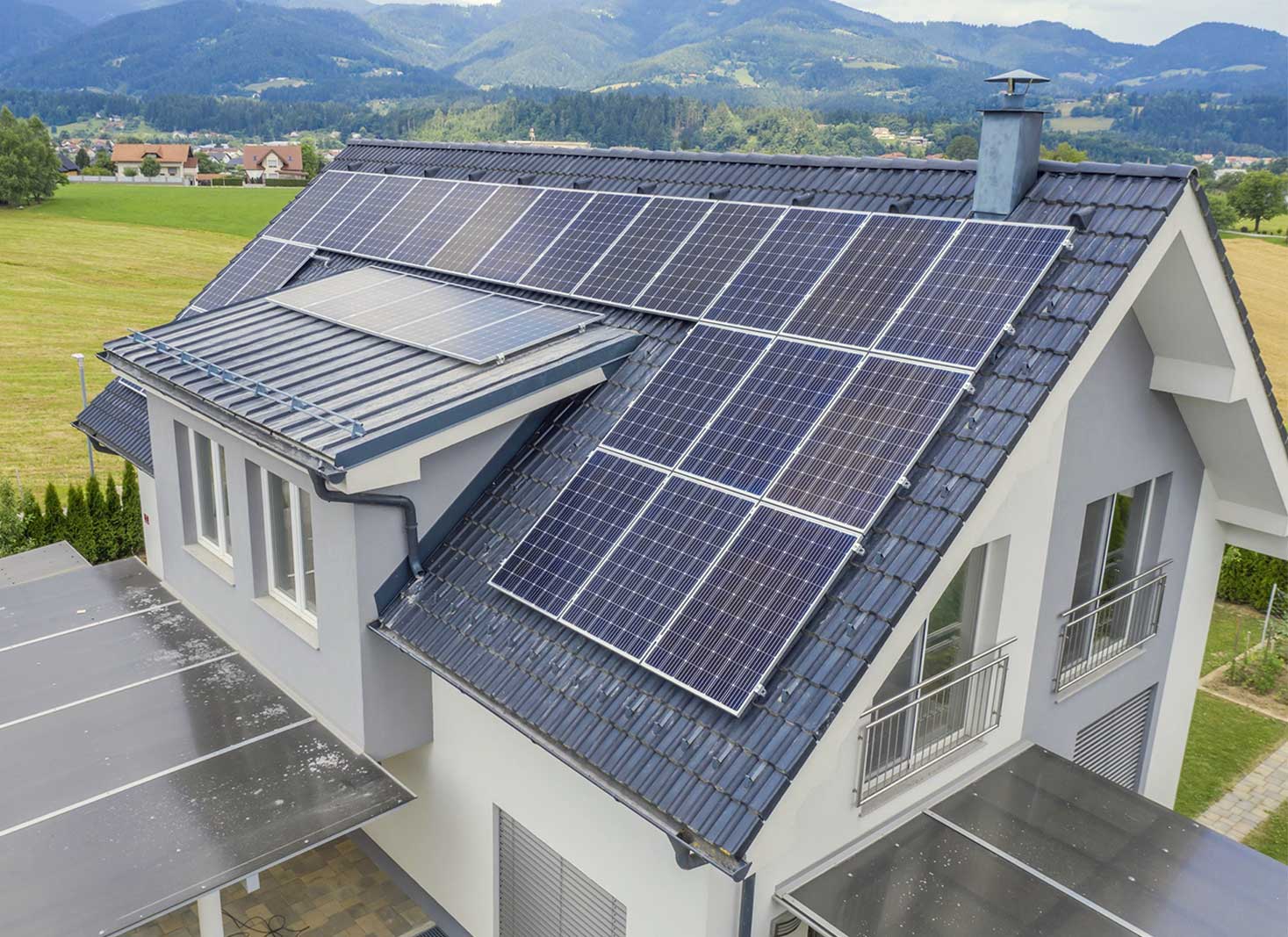Home How Solar Panels Work
Everything You Need To Know About How Solar Panels Work
Ever found yourself staring at the sun, wondering about harnessing its powerful rays to power up our homes and businesses? Solar panels present a brilliant solution for our growing energy needs, transforming sunlight into clean, renewable energy.
In this article, we’ll dive into the fascinating world of solar panels, unravelling the mysteries of how solar panels work and exploring their potential to revolutionise the way we generate electricity.
Table of Contents
ToggleShort summary
- Solar panels use the photovoltaic effect to convert sunlight into electricity, with cells and modules working together for efficient energy production.
- Innovative materials & designs are revolutionising solar panel technology, making it increasingly efficient & cost-effective.
- Building Integrated Photovoltaics (BIPV) offers a promising future where homes actively generate renewable energy.
- Solar panels and solar collectors are two different, but similar solutions.
The fundamentals of solar panels

Solar panels work through a process called the photovoltaic effect, which is the conversion of sunlight into electricity using semiconductor materials. By installing solar panels on our roofs or in open fields, we can harness this renewable energy source to power our homes and reduce our reliance on fossil fuels.
Understanding how solar panels work begins with the fundamental building blocks: solar cells and modules.
Solar cells are the small, blue or black squares you see on solar panels, and they work together in harmony to convert sunlight into electricity. These solar cells are combined to form solar modules, which are then connected together to create an entire solar array. This solar array is like a symphony, with each solar cell playing its part to produce clean, renewable energy.
The photovoltaic effect
Imagine photons of sunlight as tiny energy-packed messengers, delivering their precious cargo to solar cells. As these photons collide with the solar cells, they create an electric current through a process known as the photovoltaic effect. This is the foundation of solar energy generation, turning sunlight into usable electricity.
At the core of this process are special materials called semiconductors, such as silicon, which are incredibly efficient at generating electricity when exposed to sunlight.
These semiconductors create an electric field within the solar cell, allowing electrons to flow and produce an electrical current. The result is a renewable energy source that can power our homes, businesses, and even electric vehicles!
Solar cells and modules
Solar cells are the individual building blocks that work together to create the larger solar panels we see on rooftops and solar farms. These cells are typically made of silicon, a highly efficient material for converting sunlight into electricity.
Different types of silicon, such as monocrystalline and polycrystalline, offer varying levels of efficiency and affordability, allowing for a range of solar panel options to suit every need.
To generate even more power, solar cells are connected together to form solar modules or panels. These panels can then be combined to create a powerful solar array, capable of producing enough electricity to meet the demands of a household or even a large industrial facility.
By working together in harmony, solar cells and modules bring us one step closer to a sustainable, clean energy future.
Components of a solar panel system

A solar panel system is like a well-oiled machine, with each component playing a crucial role in generating and delivering electricity to your home.
In addition to the solar panels themselves, a solar panel system includes an inverter, which converts the DC electricity produced by the solar panels into AC electricity suitable for household use, and a secure mounting system to ensure the panels are safely installed and positioned for optimal sun exposure.
The efficiency and reliability of a solar panel system are largely dependent on the quality of its components. By carefully selecting each part, from the solar panels themselves to the inverters and mounting systems, you can ensure your solar panel system operates at peak performance, providing you with a steady supply of clean, renewable energy.
Solar panel materials
Solar panels are a stunning combination of art and science, crafted from an array of materials that work together to convert sunlight into electricity. Silicon is the star of the show, serving as the primary semiconductor material in most solar cells. Other materials, such as aluminium, copper, gallium, arsenide, and minor metals like indium, selenium, cadmium, and tellurium, also play a role in the construction of solar panels.
In addition to silicon-based solar cells, there are alternative options like thin-film technologies that utilise materials such as amorphous silicon, cadmium telluride, or copper indium gallium selenide. These thin-film solar panels offer unique benefits in terms of flexibility, weight, and aesthetics, opening up new possibilities for solar energy generation.
Inverters and converters
While solar panels generate electricity in the form of direct current (DC), our homes and appliances require alternating current (AC) electricity. This is where inverters come to the rescue, converting the DC electricity produced by solar panels into usable AC electricity.
Inverters are an essential component of any solar panel system, ensuring that the power generated by the panels can be effectively utilised within your home.
There are several types of inverters available, each with their own unique benefits and drawbacks. Central inverters optimise the performance of the entire solar system, while micro-inverters work at the individual panel level, allowing each panel to reach its highest possible efficiency.
Understanding the differences between these inverters can help you choose the best option for your solar panel system, maximising both performance and reliability.
Mounting and tracking systems
The placement and orientation of solar panels are critical factors in maximising their energy production. Mounting and tracking systems are designed to ensure that solar panels are positioned for optimal sun exposure, allowing them to generate as much electricity as possible.
These systems can range from simple fixed mounts to more advanced tracking systems that follow the sun’s movement throughout the day.
Tracking systems can either be single-axis trackers that follow the sun’s east-to-west movement or dual-axis trackers that account for the sun’s changing elevation throughout the year.
Factors affecting solar panel performance

Solar panel performance is influenced by a variety of factors, including temperature, weather conditions, and placement. By understanding and optimising these factors, we can ensure that our solar panels work at their highest possible efficiency, generating the most electricity from the sun’s rays.
Temperature and efficiency
Contrary to popular belief, solar panels don’t thrive solely in scorching hot conditions. In fact, their efficiency tends to remain high as the temperature increases up to 25°C (77°F), with only a minor decline of around 0.3% to 0.5% for every degree Celsius above this threshold. This means that even on hot summer days, solar panels can continue to generate electricity efficiently.
To further optimise solar panel performance in varying temperatures, additional measures can be taken, such as installing cooling systems or selecting solar panels that are designed to withstand high temperatures.
Weather conditions and output
The most common question most people ask is whether solar panels work on cloudy or rainy days. The good news is that, even on cloudy or rainy days, solar panels continue to generate electricity, albeit at a reduced output. This means that even in less-than-ideal weather conditions, solar panels can still contribute to our energy needs.
To maximise solar panel performance in varying weather conditions, we can employ strategies such as using tracking systems to ensure the panels always face the sun, installing high-efficiency solar cells, and utilising reflective surfaces to boost the amount of sunlight reaching the panels.
Optimal placement and orientation
Solar panels need to be placed and oriented just right to soak up the most sunlight. The ideal placement and orientation of solar panels depend on factors such as location, roof angle, and shading. In the Northern Hemisphere, south-facing panels are typically the most advantageous for maximum output.
By carefully considering these factors and adjusting the placement and orientation of our solar panels accordingly, we can ensure that they receive optimal sunlight exposure and generate the most electricity possible.
Residential solar panel applications

Imagine a world where our roofs, walls, and windows are adorned with solar panels, silently generating electricity as we go about our daily lives. This is the promise of residential solar panel applications – a future where our homes are powered by the sun, reducing our energy bills and contributing to a cleaner, greener planet.
Sizing your solar panel system
Determining the appropriate size and number of solar panels needed for your household can seem like a daunting task, but with the right guidance and tools, it can be a breeze.
To calculate your daily kWh usage, simply divide your average monthly kWh usage by 30. This will give you an estimate of how much electricity your household consumes daily, providing a starting point for determining the ideal number of solar panels.
Installation
To optimise your solar panel system’s performance, it’s important to consider factors such as location, roof angle, and shading during installation. By carefully selecting the best spot for your solar panels and ensuring they’re installed at the optimal angle, you can maximise their sun exposure and energy production, providing you with a reliable source of clean, renewable energy.
Energy storage solutions
As solar panels generate electricity during the day, it’s important to have a solution for storing this excess energy for use at night or during periods of low sunlight.
Battery systems, such as lithium-ion batteries, are a popular option for energy storage, allowing homeowners to store excess energy generated by their solar panels for later use. These batteries are lightweight, long-lasting, and cost-effective, making them an excellent choice for energy storage.
Another option for energy storage is a grid-tied arrangement, where your solar panel system is connected to the local utility grid. This allows you to feed excess energy back into the grid, which can be used by others and provide you with credit for the energy you’ve contributed.
This credit can then be used to draw from the grid during times when your solar panels aren’t generating enough electricity, ensuring you always have a reliable source of power.
Grid connection and net metering
Connecting your solar panel system to the local utility grid can provide a host of benefits, including backup power in case of a power outage and financial incentives through net metering programs.
Net metering allows homeowners to sell excess electricity generated by their solar panels back to the utility company, often at the same rate they pay for electricity. This can help lower energy costs and even generate a profit.
To connect your solar panel system to the grid, you’ll need approval from your electricity distributor, a grid-interactive inverter, and a licensed electrician to ensure the system is installed safely and correctly.
Once connected, you can enjoy the benefits of a grid-tied solar panel system, including backup power, financial incentives, and the satisfaction of contributing clean, renewable energy to your community.
Innovations and future developments in solar panel technology

As our need for clean, renewable energy grows, so too does the solar industry, with exciting new advancements and technologies emerging every day. From novel materials like hydrogenated amorphous silicon, cadmium telluride, and perovskite, to innovative designs such as rollable and printable solar cells, the future of solar panel technology is bright and full of potential.
As we continue to explore and develop new solar technologies, we move closer to a future where clean, renewable energy is accessible to all, helping to reduce our reliance on fossil fuels and create a more sustainable world.
New materials and designs
Solar panel technology is constantly evolving, with groundbreaking new materials and designs pushing the boundaries of what’s possible.
One such material is perovskite, a cost-effective, easily applied crystalline material that shows great promise in improving solar panel efficiency. Other exciting developments include rollable and printable solar cells, which are incredibly thin, flexible, and lightweight, making them easy to transport and install.
In addition to these novel materials, innovative designs such as pyramidal lenses and the use of nanomaterials are also emerging. These advancements aim to increase the efficiency of solar panels, allowing them to capture and convert even more sunlight into electricity.
With each new discovery and breakthrough, the future of solar panel technology becomes even more promising and exciting.
Concentrated solar power
Harnessing the sun’s energy is not limited to traditional solar panels. Concentrated solar power (CSP) is another exciting solar technology that uses mirrors or lenses to focus sunlight onto a small area, generating electricity from the heat of the fluid. By concentrating sunlight onto smaller, highly efficient cells, CSP has the potential to significantly boost solar panel efficiency.
In addition to CSP, there’s also the emerging field of concentrating photovoltaic technology, which uses lenses and mirrors to focus greater amounts of solar energy onto highly efficient solar panels. These innovative approaches to solar energy generation hold vast potential for increasing the efficiency and output of solar panel systems, paving the way for a brighter, more sustainable future.
Building-integrated photovoltaics
Imagine a world where solar panels are not just an addition to our buildings, but an integral part of their design. Building-integrated photovoltaics (BIPV) is an exciting development that seamlessly incorporates solar power generation into building components such as façades, roofs, and windows.
BIPV systems not only generate electricity but also serve as functional building materials, offering a cost-effective and sustainable alternative to traditional construction methods.
From solar roof tiles to window glass embedded with photovoltaic cells, BIPV is transforming the way we think about solar energy and its integration into our everyday lives. As this technology continues to advance, we can look forward to a future where our homes and buildings are not just powered by the sun, but are an active part of the solar energy generation process.
FAQ's
Solar panels work by taking energy from the sun and converting it into electricity. Sunlight is made of photons, which excite electrons and cause them to flow through the panel, producing an electrical current.
This electricity can then be used to power homes and businesses, providing clean, renewable energy.
Solar panels capture energy from the sun’s rays, transforming it into DC power. An inverter then converts this power to AC electricity, which is used to power your home.
This clean and efficient form of energy offers numerous benefits while helping you to save on energy costs.
Despite cloudy weather, solar panels will still generate power from the available sunlight – even when that light is partially blocked or reflected. They also benefit from rain as it washes away dust and dirt, helping them to continue functioning optimally.
With proper maintenance, you can rely on your solar panels no matter the weather!
Solar panels do not generate electricity at night because they rely on sunlight to produce the photovoltaic effect that generates electrical current. During the nighttime, when the sun is not shining on the solar panels, there is no source of light to create the energy needed for the photovoltaic process.
Table of Contents
Toggle




